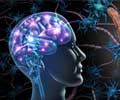Scientists have discovered a mechanism triggered by the misfolded proteins that could be one early trigger for cell death in Huntington's disease.
Scientists have discovered a mechanism triggered by the misfolded proteins that could be one early trigger for cell death in Huntington's disease.
It's long been known that Huntington's is driven by a single mutated gene that creates proteins with abnormally long repeats of the amino acid glutamine ("Q").But there are certain neurons in which these "polyQ-expanded" proteins misfold and clump together, eventually damaging and killing cells.
However, Martin Duennwald, formerly a postdoctoral researcher in the lab of Whitehead Member Susan Lindquist said that the steps that kick off the process of cell damage and death still appear to be a mystery.
The researchers claimed that a better understanding of the cellular toxicity might pave the way for new therapies to cure this fatal and incurable disorder.
"This is a diabolical disease, because the misfolded protein interacts with and probably traps many other proteins in the cell," said Lindquist.
For the study, the researchers first examined what makes polyQ-expanded proteins toxic in yeast. Later, they performed similar experiments in two kinds of mammalian cells-rat cells that model neurons and mouse striatal cells (from the part of the brain most afflicted in Huntington's).
Advertisement
"With no garbage disposal, all of a sudden the ER is flooded with proteins that need to be degraded," said Duennwald.
Advertisement
"We were quite surprised because the ER didn't seem to have any connection with the misfolded proteins in the cytosol. This study tells us to investigate cellular pathways beyond the usual suspects," added Duennwald.
Then, the researchers found that the reason for this breakdown is that the polyQ-expanded fragments glom onto the key VCP/Npl4/Ufd1 protein complex, which helps in the transport and degradation of the proteins that flunk quality control in the ER.
After genetically modifying cells to over-express two crucial proteins in the protein complex, the toxic effect was found to drop. Also, the study showed that polyQ-expanded proteins avoid a main method by which cells deal with misfolded proteins.
Usually, a class of proteins called "chaperone" or "heat shock" proteins move in and either helps the misfolded proteins in regaining their normal shape or help to get rid of them.
"Amazingly, polyQ-expanded proteins don't elicit the heat shock response, and that might contribute to their toxicity," said Duennwald.
The findings of the study may lead help the researchers in treating the disease. Also, it suggested that activating the cell's protein quality control mechanisms may lead to novel and effective strategies for fighting Huntington's and other illnesses driven by polyQ-expanded proteins.
The study has been published in the online edition of the journal Genes and Development.
Source-ANI
LIN










